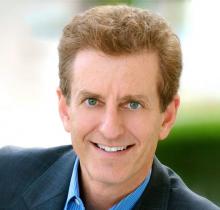You are here
America after peak cars and snacks
Nov 20,2023 - Last updated at Nov 20,2023
SAN DIEGO — Tom Cruise’s sports-agent character in the 1996 film Jerry Maguire spoke one of Hollywood’s great catchphrases: “Show me the money.” But the smarter lines come from the wife of Maguire’s sole client, Rod Tidwell. When the best Maguire can offer Tidwell is a gig endorsing waterbeds, the savvy spouse exclaims, “He deserves the big four: shoe, car, clothing line, soft drink. The four jewels of the celebrity endorsement dollar.” Today, two of those four jewels are cracking, and the fissures will remake the US economy.
Ask a European to describe Americans, and you will likely hear two things: big people and big cars. Sure, it’s a stereotype, but on average Americans do weigh 20 per cent more than their transatlantic neighbours and drive 32 per cent bigger cars. This is not just a matter of pounds and inches. Food (including soft drinks) and cars are key drivers of the US economy, employing 16 million and 4.4 million people, respectively. But these two sectors may soon begin to shrink, upending a 70-year trend that began after World War II and literally shaped American life.
Why, after so many generations raised on Twinkies and V8 engines, are American consumers’ tastes changing? Blame kids and chemists.
Kids these days do not care much about cars. In the 1980s, 80 per cent of US high schoolers earned their drivers’ licence; that figure has since dropped by 40 per cent. Like audiences for symphony orchestras, the average age of an American driver has climbed, so that a 70-year-old is now more likely to drive than a 20-year-old. What a change since the 1960s, when the Beach Boys sang about a girl who “makes the Indy 500 look like a Roman chariot race” and will have “fun, fun, fun ‘til her daddy takes her T-Bird away”.
Back then, cars were more stylish, with jet-age fins and two-tone paint jobs. Carmakers used to hide their new designs from car-magazine paparazzi, who would chase prototypes through Detroit’s back streets. CEOs would host televised unveilings of new models. Today, Bill Ford does not hear oohs and aahs; Tim Cook from Apple does. And why not? Uber, Lyft and Zipcar rides are just a few touchscreen swipes away.
The downward shift in Americans’ interest in cars seems to be on autopilot, a fitting state of affairs, since self-driving cars are just around the corner (mostly figuratively, but if you live in Austin, also literally). Headlines blare whenever a self-driving car bends a fender or slams into a pedestrian, but these cars are getting smarter. Before long, auto-insurance companies may begin to retreat from covering human drivers. And then there are electric vehicles (EVs), which contain 90 per cent fewer parts and require 30 per cent fewer workers to build than gasoline-powered cars do.
Squeezed by all these pressures, it is hard to see how autos will dominate future economic headlines, unless someday robots go on strike. Tellingly, NBC recently cancelled American Auto, its sitcom series about a struggling car company.
The second jewel of the Jerry Maguire quartet, soft drinks, is vulnerable not because of the changing tastes of kids, but because of the changing tastes of overweight people. Today, half of American adults, over 135 million people, are either diabetic or pre-diabetic. But in the past six months, share prices of snack companies like Hershey and Mondelez have fallen about 30 per cent.
Investors and food executives worry about the increasing use of appetite-suppressing drugs like Ozempic and Wegovy. A 2021 study shows that people who take such medicines for a year cut their calorie intake and lose about 15 per cent of their body weight. Morgan Stanley reports that 65 per cent of obesity-drug patients drank fewer sugary carbonated drinks, and Walmart’s CEO says that the grocery basket has already shrunk, with “less units, less calories”. America’s food bill could dip by several percentage points.
Of course, these new drugs do face obstacles. Long-term use may reveal risky side effects or evidence that their appetite-suppressing effect wears off. It’s also possible that users become depressed when they lose their lust for Krispy Kreme donuts and 32-ounce Big Gulps of Mountain Dew.
Meanwhile, insurance companies struggle to decide which medications they should cover and for whom. The drugs are pricey, but if customers lose weight, they are less likely to suffer heart attacks, require expensive knee-replacement surgery, or depend on electric scooters to get around in shopping malls.
If Americans spend less on cars and consume less food, where will that money go? These trends should free up more dollars for entertainment experiences, whether streaming subscriptions, concert tours, video games, or family vacations.
Disney might find that more fans show up at its theme parks but spend less at Minnie’s Bake Shop. Mark Zuckerberg’s Metaverse or Google’s Starline could start to seem more affordable to potential users. Taylor Swift might be able to raise her concert prices even higher or create doppelgänger avatars to perform her songs simultaneously in stadiums around the world. Cruise lines could earn higher profits by not piling food so high at on-board buffets.
When Jerry Maguire premiered, we had no iPhones, no streaming platforms and no EVs. The term 5G sounded like a spot in a parking garage, and “the cloud” was only in the sky. Cars and sugary drinks seemed like permanent fixtures of American life. But soon we may see them in the rearview mirror.
Todd G. Buchholz, a former White House director of economic policy under president George H.W. Bush and managing director of the Tiger hedge fund, is a recipient of the Allyn Young Teaching Prize at Harvard, the author of “New Ideas from Dead Economists” (Plume, 2021) and “The Price of Prosperity” (Harper, 2016), and a co-author of the musical “Glory Ride”. Copyright: Project Syndicate, 2023. www.project-syndicate.org














Add new comment